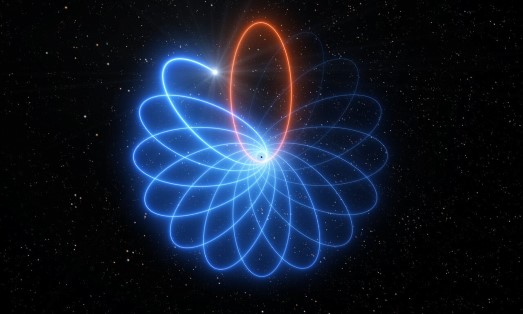A star named "S2" dancing around the supermassive black hole at the centre of our Milky Way Galaxy has been observed by the "Very Large Telescope" of The European Southern Observatory. It has demonstrated that the prediction made by Einstein's general theory of relativity still holds true even in the most extreme environment.
Gathering the data from 27 years of observations, astronomers have shown that S2's ellipse-shaped orbit does not stay fixed in space. The orbit of S2 shifts around like drawing a rosette - a phenomenon known as Schwarzschild precession.
In fact, the Schwarzschild precession was first observed in our Solar System. Over a century ago, astronomers had already known that the planet Mercury behaves like S2 does, but they could not explain it with any physics theories at that time. In 1915, Einstein successfully explained the weirdness of Mercury's motion with his general theory of relativity, and it became an important evidence in favour of his new theory.
Since S2's orbit follows general relativity so well, astronomers hope that it can help us unlock more secrets about the formation and evolution of supermassive black holes. This dance between S2 and the black hole is really important!




